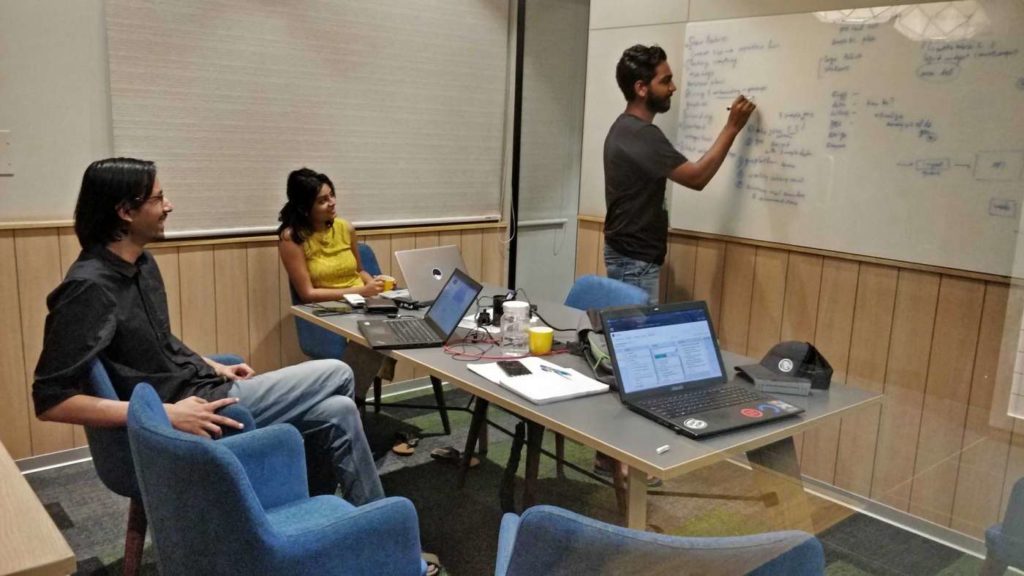Location is one of the fundamental metrics when it comes to the movement of assets such as people, vehicles, cargo, parcels and others on the ground. Analysing location data is quite challenging because unlike statistical data, it comprises three dimensions in the form of values across time and dynamic location. It, therefore, requires a different approach and treatment. Most companies, even if they collect location data, fail to analyse patterns due to the lack of infrastructure.
Another challenge is how these location data are visualised. Statistical data can be represented via bar and charts while the same when used for location data; the result is futile. It requires the understanding of mapping tools to understand spatial distribution.
Locale.ai is a Bengaluru-based geospatial startup that is helping companies overcome these challenges and make sense of location data. Founded by Rishabh Jain and Aditi Sinha, it was started because they faced problems dealing with geospatial data while working with the previous company.
“We both had spent a considerable amount of time working on various geospatial projects with governments, FMCGs and startups; which is when we realised the need for a product like Locale,” shared Aditi Sinha in conversation with Analytics India Magazine.
What Were The Challenges
As Sinha shares, while working on various projects involving location data, they had to build their own internal tools because there weren’t any suitable analytics tools for geolocation data. “This was when we realised that companies are collecting a huge amount of location data, but they aren’t leveraging these data for their decision-making,” she said.
Reminiscing the earlier days, Sinha shared that they spoke to around 50 well-known companies all over the world to understand the kind of insights they look for in location data, which tools do they use, and what kind of decisions they took, and more.
“Their answers gave us the much-needed confidence we were looking for, but still were clueless about the solution. We then demoed our prototype to some leading on-demand and mobility companies in India, and with that, we bagged our first set of small PoCs,” she said.

How Does Location Analytics Work At Locale
Sinha is quick to add that at Locale, our main aim is to help companies become operationally efficient. It converts the location data of demand, supply and static locations into meaningful insights.
Explaining how it works, Sinha shared that, to begin with, they ingest all the location data a company collects across different databases, formats and systems. For example, user event data from tools like Mixpanel, ping data sources like AWS S3 and transactional data stored in MongoDB. Then they perform ETL on this data, after which, the in-built data pipeline combines all of these data in one place. The data is then fed to a data model. Further, APIs pull these data, and the visualisation is rendered on the map.
“We also have our in-built intelligent data-science models which help perform tasks such as cluster analysis and anomaly detection on the data,” she added.
Locale is currently serving areas such as micro-mobility, ride-hailing, on-demand delivery, e-commerce, third-party logistics and FMCGs. It helps the various companies in the following ways:
- Get localised insights about sales across all stock-keeping units, delays, and sales representative’s performance.
- Help them find areas or geographies that they should expand to and penetrate so that they can do hyperlocal marketing in these areas by using user booking data.
- Reduce their user churn and improve user retention.
- Providing granular insights on which areas to expand to cut time and revenue spent in user acquisitions.
- Using the analytics dashboard, individuals and teams can debug cancellation patterns of user and riders in different areas
- Ride-hailing companies can use Locale for better vehicle utilisation and to identify where supply-demand gaps are occurring to better re-distribute vehicles/riders across the city.
“Using the insights from these, you can tweak your operations and improve your KPIs and overall profitability. Since most of the location data is real-time, it helps you in being proactive on metrics like fleet performance, vehicle re-distribution and inventory analysis”, she said.
Tech Stack At Locale
Locale.ai uses a wide range of open-source tools to handle large scale datasets in the frontend and backend. The frontend is powered by Uber’s Deck.gl for high-performance visualisations, Nebula.gl for additional editing capabilities and Mapbox-GL for rendering maps. Whereas, for the backend, they use Python, PostgreSQL and PostGIS for powerful data processing and geospatial operations.
“We also leverage Amazon S3 for storing our data. For our scalable analytics, we mainly use Python along with Dask. We also use Uber’s H3 to aggregate geospatial data at different levels which helps us to view data at different granularities and create a standard system for all verticals,” shared Sinha.
The Way Ahead
The startup recently raised a pre-seed round of funding led by Better Capital, with participation from notable angels such as Raveen Sastry, Pallav Nadhani, and Nachiketas Ramanujam. As Sinha shared, the funding will essentially help them scale the team and expand globally.
That being said, it faced challenges due to the pandemic. While the COVID situation hit the startup badly, they are slowly shifting the focus from the ride-hailing segment to on-demand delivery and logistics industry, as the pandemic has largely hit the ride-hailing industry.
“In the initial days of global lockdown, we realised that the majority of logistics players who influence the global supply chain didn’t really have any visibility or plan to deal with a sudden spike in demand. Locale can help these companies foresee such changes in demand/supply and help them prepare for such situations better; she said while signing off.



















































































